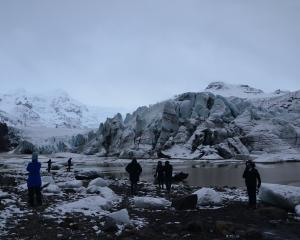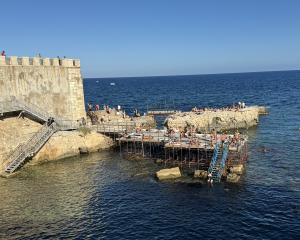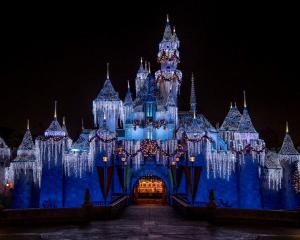Looking over the gate to one of the country’s most spectacular cycle trails, they’re fizzing with excitement.
"I can smell it," says Dave. "This is going to be next level."
The couple’s Central Cycle Trail Co has been operating in the area for years and is looking forward to completion of the 54km Lake Dunstan cycle trail. The final 25km stretch through the spectacular Cromwell Gorge has since been finished. Many clip-on cantilevered sections have been bolted to the sheer schist rock walls, just above the water level in places.
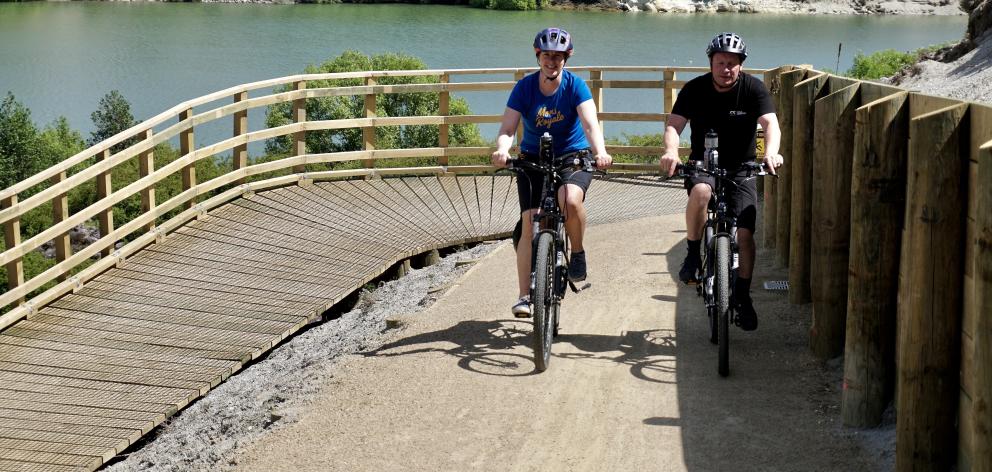
Barges shipped supplies to work sites and work on carving, scraping and blasting is done for what is a grade one-to-two trail, a smooth, fine gravel surface and allowing for two-abreast cycling in many places.
A massive suspension bridge blends into the cliffs and the new section feels tantalisingly close from the other side of the gorge where the main road is. Dave reckons it will be the jewel in the crown of the existing 530km cycle trail network in Central Otago.
The trail down the western edge of the gorge will also take riders over bluffs formed from rock 18 million years old.
The feats of engineering plain to see on the trail echo those of four decades ago when the Clyde Dam was built.
The artificial lake, brilliant turquoise in the bright sun and mirror-smooth in the morning, ends at the dam and at the pretty and historically important township of Clyde, where Central Cycle Trail Co has its base among the stone buildings on the main street. It's the epicentre of many day rides on e-bikes.
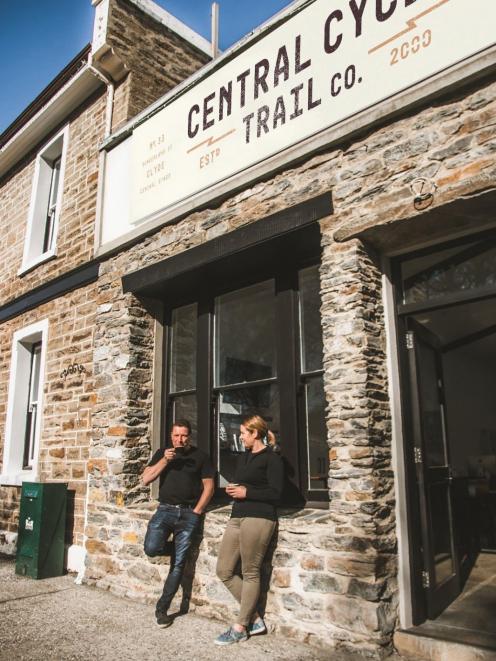
What’s now a tourist town was built on gold mining 150 years ago, then around electricity generation. And it’s electricity that has been a game-changer for cycle tourism.
Saddling up
The Thomsons are investing heavily in e-bikes for their 290-strong rental fleet. The German-designed bikes range from cruiser-style comfort machines to grunty, dual-suspension mountain bikes with powered seat droppers.
Bespoke features include raised handlebars for a comfortable upright riding position, gel-cushioned saddles for extra comfort and to prevent chafing, comfort grips for a relaxed comfortable riding position, ultra-light wheels for an easier ride, durable centre-ridge tyres for an easier and safer ride, and disc brakes front and rear.
They allow almost anyone to share in the joy of cycling.
Dave is a tinkerer and inventor and the firm works closely with a supplier in Taiwan who will supply specially crafted parts for the New Zealand market.
He’s modified bikes for amputees and taught adults who couldn’t ride a bike to ride in five minutes. The youngest to do the 152km Central Otago Rail Trail with their firm was 3, the oldest 89.
These are high-end e-bikes worth up to $9000 and they ease what can be a slog into a headwind or up hills. Of course, if you’re wanting to work on your fitness, you can just turn the power down or off.
There are many moving parts to a cycle holiday, including transfers to the starting point, what sort of bike you will need, where you will go, stay, eat, and how to get your luggage to where it needs to be.
This is all on an app the firm has developed and is continuing to refine. It’s packed with the practical information you need for your ride but also describes the history and natural features of where you’re going.
Thyme to ride
I was eased into the Lake Dunstan trails with a short hop from Carrick Vineyard, where Central Cycle Trail Co is setting up a pop-up depot for hire bikes, through vineyards and olive groves to the start of the Cromwell Gorge trail, which for now is still blocked off.
Along the way, we met a party of women friends, one with a dog on her e-bike carrier, and chatted as we looked back across the Kawarau River to Cromwell.
That’s a nice part of cycle trail riding — when you stop for a breather you’ll quite often yak with other groups. We were surrounded with the pink and purple blooms of wild thyme that cover hillsides during spring and becomes more fragrant as the days heat up.

Thyme was introduced by gold miners in the 1860s to flavour their tea and has become a beautiful invader. You’re also cycling among flowering lupin and vivid yellow Californian wild daisy — it’s gorgeous.
It was back to lunch at Carrick. It’s an organic vineyard which is in the heart of Bannockburn wine country, one of the hottest and driest sub regions in the country. A tasting selection gave a clear indication of how good the wine was and the slow-roasted oyster shoulder of lamb with a salad and Yorkshire puddings was delicious.
You can then take the 12km from Carrick to Cromwell with a fabulous new cycle bridge under the road bridge crossing the Kawarau and along the lake front to the Cromwell Heritage Precinct.
When the Clyde Dam was completed in 1990, Cromwell’s main street disappeared under Lake Dunstan. Some of the historic buildings dating back to the gold rush of the 1860s were saved or rebuilt on higher ground, creating the Cromwell Heritage Precinct.
At the western end of the precinct is a Cromwell food institution, Armando’s Kitchen. Originally from Northern Italy — and a big fan of the south of that country — Armando Varlotta worked for many years as a chef in London before coming to New Zealand in 2009 and opening the Cromwell restaurant two years later.
His menu is influenced by family recipes and lives by the creed that "Our food is made with love."
He’s not only a culinary artist, he's cool under pressure. A power cut to the town of 5000 the night we dined there meant it was gas cooking only but he still produced a magnificent three-course meal for our group.
The cycle trail takes you close to Lake Dunstan and past a remarkable landmark Gothic building, The Stone Temple, formerly St John’s Presbyterian church. In 2004, Kiwi businessman and entrepreneur Brendon Urlich bought the church (the congregation needed more space so moved to a modern building elsewhere).

There’s some availability to rent it by those on tours run by Central Cycle, for which Urlich provides marketing and mentoring expertise.
The Lake Dunstan trail extends a further 10km to Pisa Moorings, under the imposing 2000m high Pisa Range. You get a good look at the lake, which has great brown trout fishing, and you end up at the Heritage Hotel Lake Resort, which has apartments over an inlet carved from a sheep farm 20 years ago.
The apartments are perfect for a romantic getaway or families as they are huge, with fully equipped kitchens. The Moorings Restaurant also serves up superb local produce — and enormous servings — and the bar is a lively local hangout.
Central Cycle is installing another depot at the resort that will run over summer.
Golden years
The Roxburgh Gorge trail has been described as one of New Zealand’s most visually spectacular day rides. Stretching between Alexandra and Lake Roxburgh Hydro Dam, the trail follows the Clutha past eroded bluffs and old gold workings set amid willows, native shrubs and the ever-present fragrant thyme.
Pip and Dave are expert cyclists — he’s represented New Zealand and ridden professionally — and passionate about getting out for a ride.
They build it into the workday as often as possible. The gorge ride is on a mainly 2.5m wide trail, with some moderate climbs and a great view of the milky turquoise Clutha in many spots.
Cycle or walk from Alexandra to Doctors Point and then back again, or start from Lake Roxburgh Dam and head upstream to Shingle Creek and return.

The jet-boat trip bridges the missing link on for now-closed land and then it’s another 11km to Roxburgh.
We met Clutha River Cruises' Laurence van der Eb for an unhurried journey back to Alexandra after bikes were loaded on to the back of his jet-boat.
Laurence is an absolute goldmine of knowledge with boundless enthusiasm for the area where gold was discovered in the 1860s, attracting the desperate and the lucky. Sometimes they were the same.
Many of the Chinese miners lived in huts that were part of the landscape. The miners would look for a roof of overhanging rock, build up a schist wall and leave an entrance door and hang a sack over it.
They were more like caves and Laurence knows where dozens of them are, clinging to the cliffs near the tailings, which he says still produce specks of gold when put through a pan. He’s a great host and a volunteer guardian of the huts where miners survived the cruel winters, clearing them of invasive weeds.
He takes us back to Alexandra, where you can do a great river trail to Clyde on what is known as the River Walk, a flat 11.8km ride with sweeping bends and some boardwalks among the trees. Once you’re in Clyde, a short diversion to the dam is worth it. There’s one million cubic metres of concrete in there and in spring the spilling water looked spectacular.
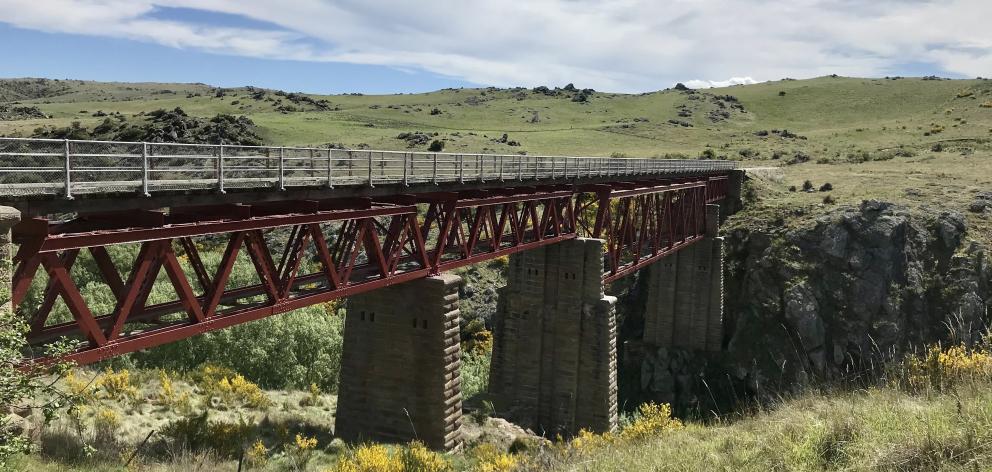
We rode to Auripo and return, which took about two hours, through two tunnels and across the spectacular Poolburn Viaduct — 108m long and 37m high, with impressive schist rock piers and abutments.
It was easy to tell why New Zealand's original great ride is so popular: it’s wide for social cycling and has a well-established dining and accommodation infrastructure along it.
And when your friendly tour company can sort that all out, and get your bags to where they need to be, it’s a breeze.
Dave explains what gives him a thrill and nicely captures the joy of cycling in the area.
"I’ve raced for New Zealand for years but it’s not about going faster, it’s about going happier. You might have a group that’s a bit older or not as fit as they’d like to be. Getting them to the end of the trip in a beautiful place — that’s what really rocks my boat."
Tips for the trails
• Do some riding if you can beforehand to avoid getting saddle sore. There’s a detailed plan on Central Cycle Trail Co's app and Dave says do as much as you can in advance
• If cycling the Otago Central Rail Trail in spring, consider Clyde or Middlemarch as you’re more likely to enjoy a tailwind
• In February the swimming holes are inviting
• There is little wind in March and April but these are the peak months, so take that into account when booking
• Central Cycle Trail Co is working on a winter programme for groups of riders on fixed dates so look out for that
• E-bikes have democratised cycling. They’re great for kids as well. You’ll pay more to hire them but anyone not at their pre-pandemic peak will appreciate them. I did


